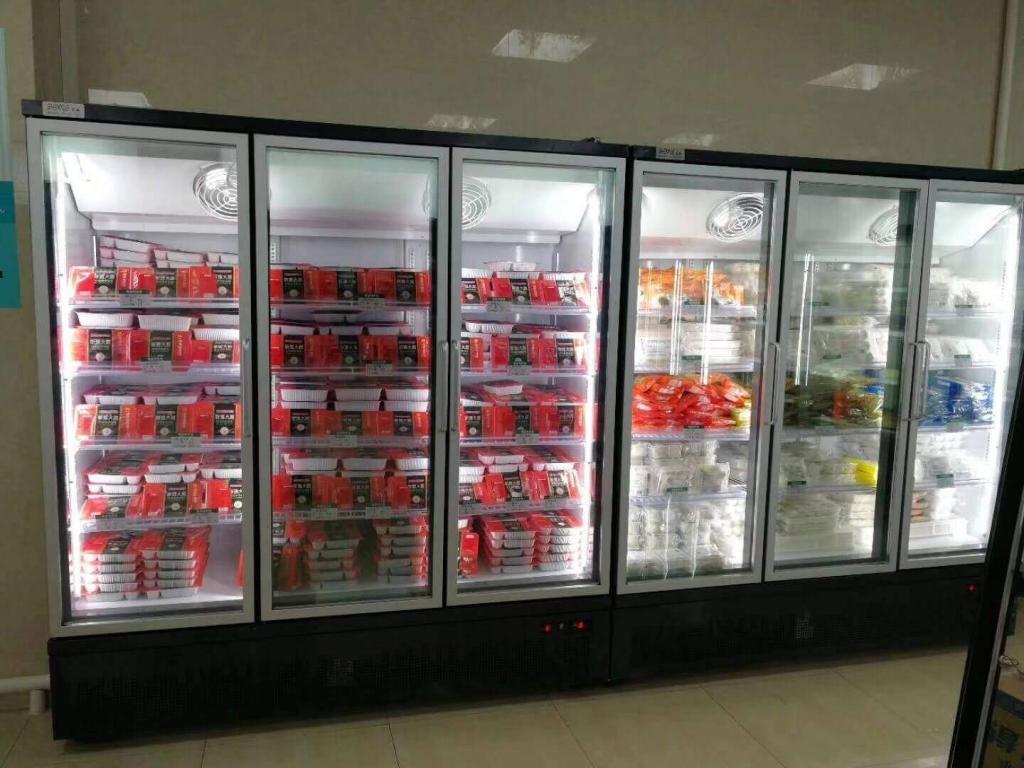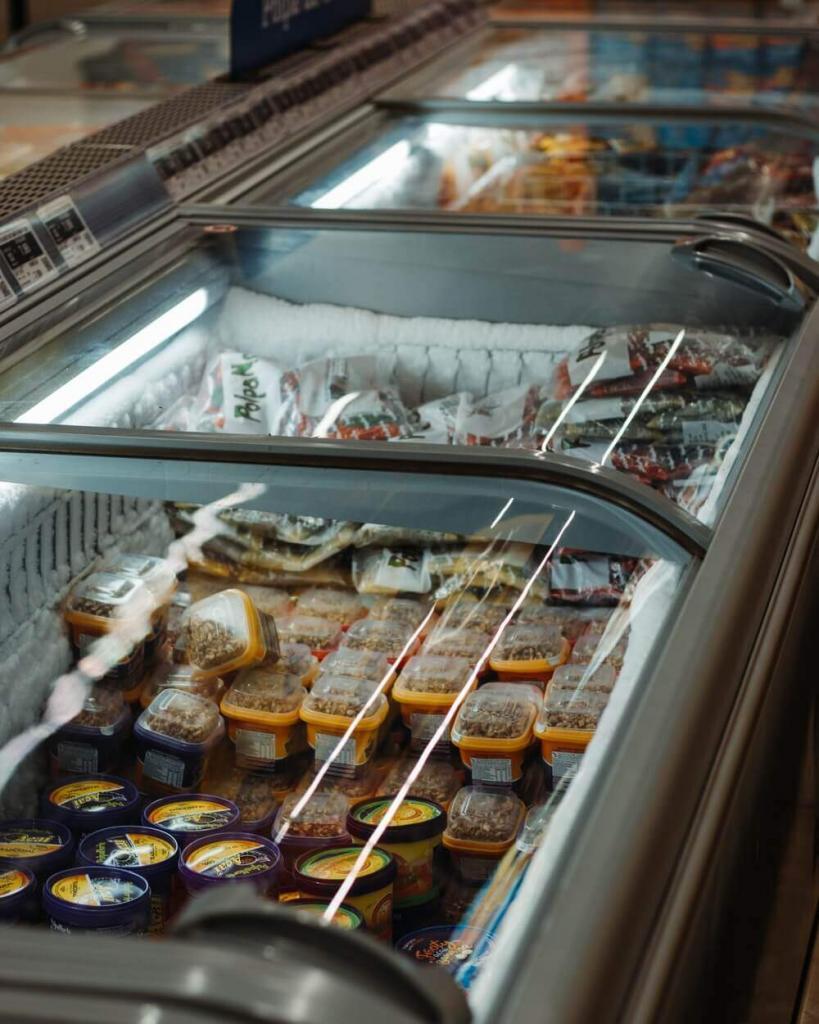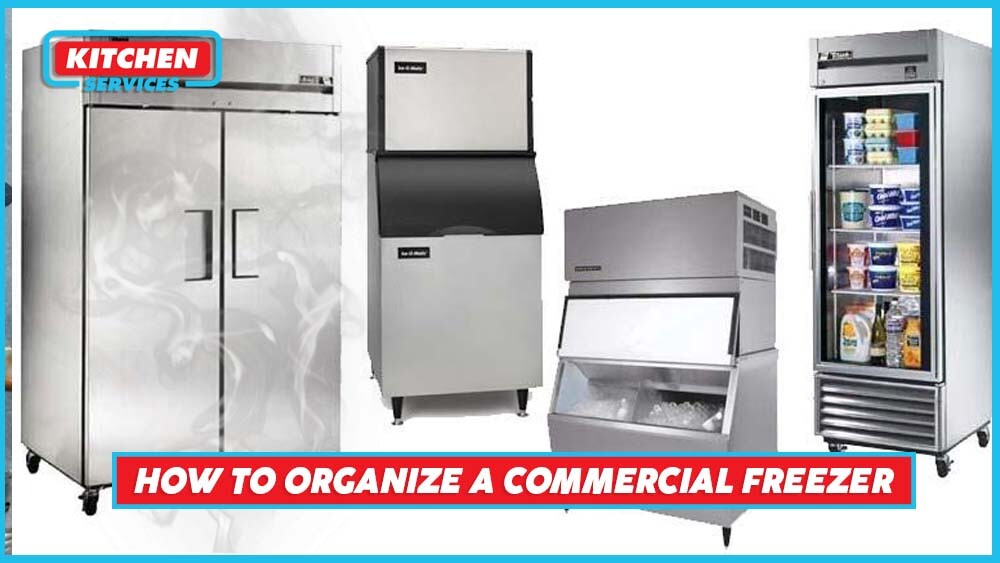Food waste can be reduced and efficiency and safety may be maintained by properly organizing your commercial walk-in cooler or freezer. Organizing the contents of your commercial refrigerator and freezer might not be the most thrilling task on your list. After all, managing everything from creating menus to ordering supplies, from scheduling employees to catering to the needs of the customers, etc. is not an easy task. This article will help you in finding out How to Organize a Commercial Freezer for your restaurant and commercial area.
Refrigeration equipment should function properly on its own, but it will function even better if the food within is carefully arranged. In fact, a refrigerator that isn’t well-organized may be working harder than it needs to. This can cause the compressor to wear down prematurely, resulting in an increase in your utility cost.
Food storage management in commercial refrigerators and freezers must be regular and organized. This applies to all types and sizes of commercial refrigerators and freezers. Depending on the size and configuration, you may need to add inside shelves, pan rack slides, or even dunnage racks.
If you are looking for Walk in Freezer Installers. We at Kitchen Services offer a comprehensive Walk In Cooler Installation service in Santa Monica, Los Angeles, and around. From helping you select a cost-effective and energy-efficient model to installing it with a focus on quality and eye for details. We specialize in all commercial and industrial walk in freezer services.
Importance of Keeping Your Commercial Freezers Organized
The following reasons might compel you to properly organize your commercial freezers.
- Your monthly refrigerator cleaning sessions will become easier when you will start keeping the shelves of your freezers organized.
- When everything has a set position, ordering and restocking will become simpler. You’ll be able to see what you need immediately and won’t have to go seeking more cases elsewhere.
- When shelves are arranged, there is less of a need to clean frequently. Food will have a designated location, and items will not be put in wherever they fit.
- Food of high quality is not cheap. Your storage strategy ensures that everything you buy stays in good condition and doesn’t go to waste.
- By following the organization’s guidelines, you can avoid potential health code violations. One of the reasons your business could be fined or possibly shut down is improperly stored food.
- The quality of your meals will improve if you make good use of your space.
- A well-organized commercial kitchen ensures a smooth operation. Your employees will be able to go back on the line faster if they aren’t wasting time looking for certain food in an unorganized freezer.
- When your fridge and freezer are disorganized, they work harder, which means you’ll need to contact for repairs more frequently if your food isn’t cooling properly.
Here is a helpful guide to organizing your walk-in freezer in a commercial setting.
Tips for Organizing a Commercial Freezer
Here are a few tips on How to Organize a Commercial Freezer? You can manage the space in your commercial freezer in a variety of ways. While some of how you put things will depend on your stock and usage, there are various health and safety requirements to follow to avoid cross-contamination. Here are some fundamental kitchen organizing rules that you can use to create a policy for your company.

Keep Space Between Items
Your commercial fridge and freezer need to be able to circulate the cold air. Although the desire is to cram everything into the fridge to make the most of the space, your fridge requires about three to six inches of space between the walls and the food goods to provide the greatest refrigeration. In your fridge, air circulation minimizes hot areas and uneven cooling and freezing.
Meat Items Should be Stored on the Lowest Shelf
If you keep meat on higher shelves, it’s much more probable that it’ll flow down and contaminate the rest of your stock, potentially exposing your consumers to hazardous bacteria. Hence, meat should always be kept on the lowest shelf of your refrigerator. Keeping your meat on the lower shelves makes it easier to clean up if there is a spill, but it also prevents potentially harmful cross-contamination. If any other food comes into contact with the meat’s fluids or marinade, it must be thrown away immediately.

Follow the Rules of FIFO
The shelf-life and use-by dates of products are critical for preserving the quality of your items. When arranging your storage units, make sure to follow the first-in, first-out (often abbreviated as FIFO) concept. Place newer products in the back of your fridge and freezer when stocking. If the date codes are small, mark the dates in larger numbers on the box before storing them, and make sure the items are placed in such a way that the dates are visible.
Make it clear so that the workers find the required products conveniently. Before you open anything new, make sure you’ve used what’s already there. This is a cost-effective strategy that will save you a significant amount of money.
Store Food off the Freezer/Fridge Floor
You cannot expect all your workers to know about the health code requirement. Having that said, it falls under your responsibility to spread awareness among your workers regarding it. If you want to avoid water or any other contaminated particles seeping into your food items, then it is necessary that you keep all things off the freezer or fridge floor. This is a very basic yet highly important organizing tip that also falls under the health code requirement.
It’s easy to overlook this rule when there’s a rush of clients. This difficulty can be avoided by having enough shelves. Ensure that your entire crew is aware of the need of adhering to this regulation in order to avoid food contamination and pest infestation in your commercial refrigerator. Often, a note on the door is sufficient to remind them.
Label the Shelves and Items
This is a common mistake that most of the workers unintentionally make. Labeling allows someone who isn’t as comfortable with your system to come in and find things quickly, which is useful if you have new staff who are still learning their way around the kitchen. When you label your shelves, it’s easy to see if something is out of position or completely out of stock.
Make sure that everyone in the company understands that anything that goes into the fridge needs to be labeled. The date you made or purchased the items, as well as the use-by date, should be included on this label. It is like a record being maintained for food items. When they were made, when they were purchased, etc.
Some Food Items are to be Kept Away from Fans
Your commercial refrigeration unit consists of fans. These fans don’t show any blades but when it comes to their functioning, they are very fast and strong. As much as this airflow is required, it is harmful to some delicate food items.
For example, you should avoid keeping items like berries and green veggies away from these fans. When storing food in the freezer, keeping it close to the fans increases the risk of freezer burn.
Commercial Fridge Storage Rules
Refrigerating your food in the perfect way is very important to make sure that your food stays safe to eat and stop harmful bacteria from spreading from raw to ready-to-eat foods. But do you know exactly what goes where? Let us see what you should keep on the shelf according to the life lifetime of each and every food. We have listed a few rules on How to Organize a Commercial Freezer for your help.
Top and middle shelf
All the food items that are ready to eat, such as all dairy products, ready-to-eat meals, and all packaged foods, leftovers, cooked meats, and some salads as well must be kept on the top and middle shelves. All of these items should be covered and kept in sealed containers in order to avoid contamination. Every food that is ready to eat should be stored at the top of the fridge so that it can be away from any raw food so that harmful bacteria cannot transfer from the raw food to the cooked food in any case.
Bottom shelf
All of the raw meat, poultry, and fish should be kept in sealed containers in order to stop them from touching or dripping onto other food that is already cooked. Raw meats should always be stored at the bottom of your fridge so that you can prevent cross-contamination in any case. Always make sure that each item is wrapped or in a sealed container so that it doesn’t come into contact with other foods to avoid their contact.
Salad drawer
So the salad such as fruit, vegetables, and salad vegetables that have already been washed previously in order to store. You always have to make sure that your fruit, vegetables, and salad are wrapped in paper or plastic bags that have proper air holes in order to keep them safe from any infection. For all your salads and herbs, you must try and wrap them in a damp paper towel before storing them to prevent them from drying out and to keep them fresher for longer time periods.
WALK-IN FREEZER TEMPERATURE RANGE
FAQ’S
What to store in the refrigerator door?
As it is said and seen that the doors are the warmest area of the fridge and should be reserved for foods that are most resistant to spoiling. Those foods contain mayo, ketchup, mustard, relish, mayo, bottled water, soda, juice because they all do best in the fridge doors. You can also keep condiments, most juices that are not fresh, and other foods that can bear temperature fluctuation.
How to stock the refrigerator?
Refrigerating your food in the perfect way is very important to make sure that your food stays safe to eat and stops harmful bacteria from spreading from raw to ready-to-eat foods.
- Upper shelves: Leftovers, drinks, and ready-to-eat foods for example yogurt, cheese, and deli meats.
- Lower shelves: Raw ingredients slated for cooked dishes.
- Door: The refrigerator door is the warmest part of the fridge, so only condiments should be kept there.
What to store in the bottom drawer of the fridge?
Well, any kind of raw meat, poultry, and fish should be sealed in airtight containers in order to stop them from touching or dripping onto other food items. Raw meats should always be stored at the bottom of your fridge so that you can prevent cross-contamination. You should always make sure that each item is wrapped or in a sealed container so that it doesn’t come into contact with any other food item.
What should be stored on the top shelf in a commercial refrigerator?
Every kind of food in the refrigerator should be stored top to bottom based on their cooking temperatures. The top shelf or shelves should be reserved for all those food items that are ready to eat and may receive no further heat treatment before utilization. The bottom shelf is for raw meats, poultry, and seafood.

